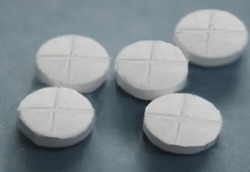 Today’s education system takes a lot of flak for not being challenging or practical enough for the “real world,” yet students misuse drugs to gain a boost during studying for tests and school assignments that are seen to be too hard. What does this mean for the future of our youth, if students can’t wade through an ineffective school system without abusing dangerous stimulant drugs?
Today’s education system takes a lot of flak for not being challenging or practical enough for the “real world,” yet students misuse drugs to gain a boost during studying for tests and school assignments that are seen to be too hard. What does this mean for the future of our youth, if students can’t wade through an ineffective school system without abusing dangerous stimulant drugs?
The Truth About Adderall
Sadly, the country traditionally considered the “most powerful,” is also the country most dependency on pharmaceutical medications.
Although we may be a mere approximate 4% of the world’s population, we consume a shocking 80% of the world’s pain drugs each year. Further, the United States produces and consumes 88% of the world’s legal amphetamine drugs (like Adderall, Ritalin, etc.)
Adderall has earned the popular title of “study drug” amongst students in high school and college. In fact, over 11% of youth aged 12-25 admitted, in the National Survey on Drug Use and Health, that they had used prescription drugs non-medically in the past year. Further, full-time college students (aged 18-22) were seen to be doubly likely to abuse drugs like Adderall.
Many people experience little or no negative side effects when first taking Adderall, but continued use can be extremely risky especially in the presence of an undetected heart condition or something of the like. Additionally, as stated above, the DEA recognizes stimulant pills like Adderall to be extremely addictive.
For those less fortunate, adverse reactions to the drug include:
-headache
-dry mouth
-sleeplessness
-excessive weight loss/loss of appetite
-addiction
-heightened blood pressure
Is Adderall The Key To Academic Success
While high school and college students claim widely that Adderall is a lifesaver, it is obvious that the stimulant drug is addictive, dangerous and possessive of risks that far outweigh its temporary benefits.
What is Adderall, exactly?
Aside from being the cure for the common procrastinator, Adderall is a stimulant amphetamine drug—not unlike meth and cocaine—which offers temporary increased energy and focus. But why not settle for a cup of coffee? Especially when the lengthy list of adverse reactions and side effects include the following:
A drug classified by the FDA as dangerous and addictive, in the same category as cocaine, is certainly not the key to academic success. A temporary crutch with heavy risks, perhaps.
Keeping Kids Drug Free and Treating Those Who Are Addicted
Many schools in the US include drug prevention programs as part of their curriculum. This is both positive and necessary. However, experts agree that drug prevention is the duty and responsibility of parents—not solely schools. For this reason, we encourage you talk to your young children and teens about drugs in an appropriate way. Tell them the truth and answer their questions whilst setting boundaries on the subject. Maintaining the “cool parent” approach is, statistically, unsuccessful.
Sadly, many thousands of young children and teens try their first drugs and alcohol each day. These cases of youth substance abuse should not be ignored or allowed to slip through the cracks.
Drug treatment for teenagers and young adults must approach the issue from all different angles, but most importantly the underlying causes of the substance abuse specific to that teenager’s lifestyle, peers and family.
Visit www.narconon.com for more information on this topic and others.
Source: http://www.iowastatedaily.com/news/article_82ad5eda-3f14-11e2-8788-001a4bcf887a.html